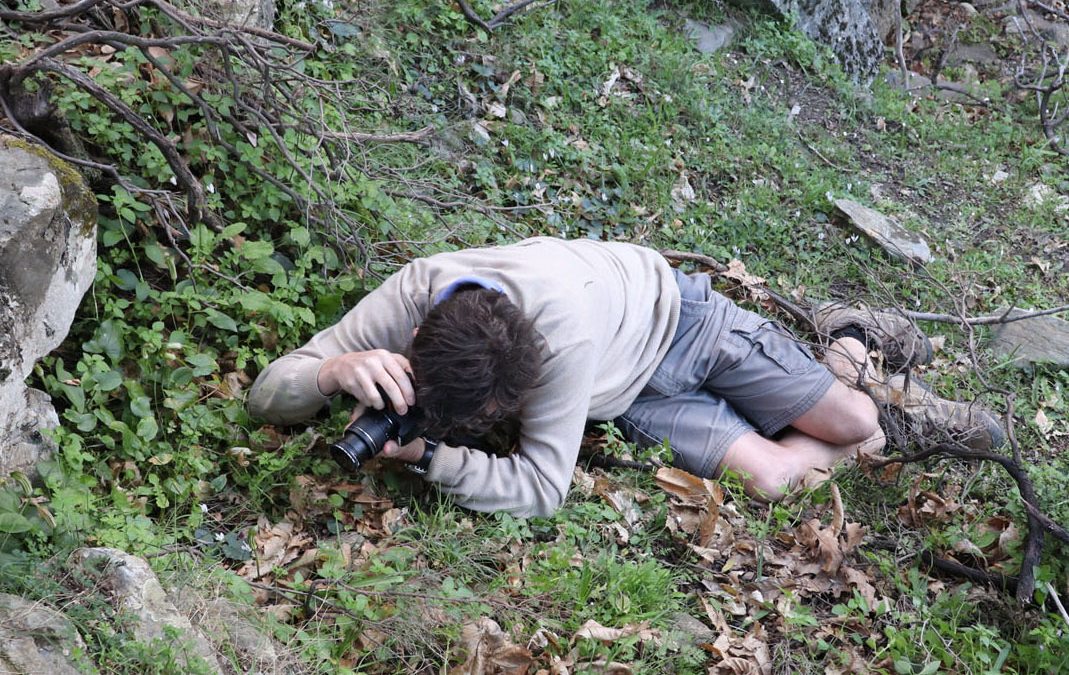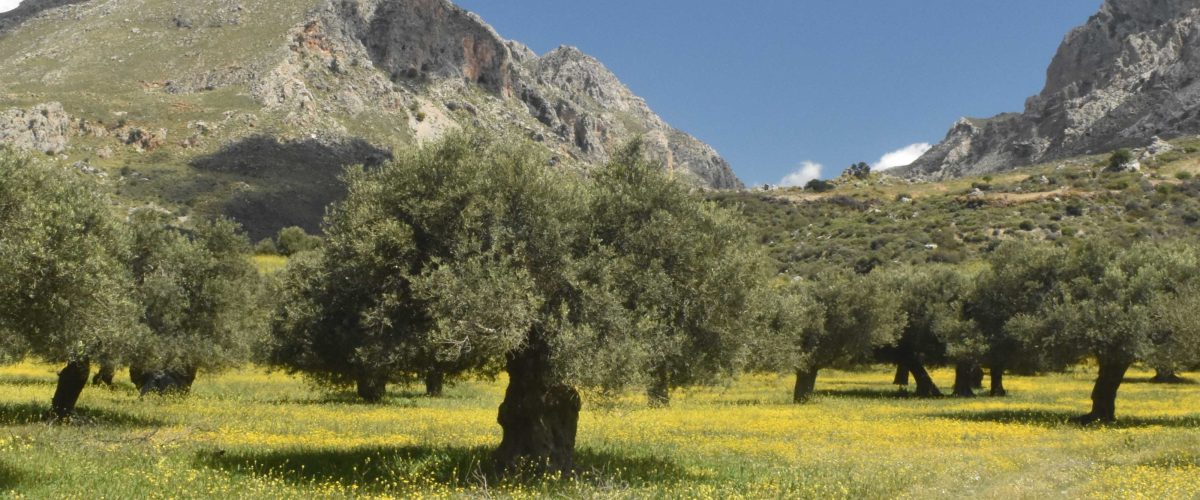
Dragon hunting in Crete
Written on 28th June, 2023I’ve promised myself one plant hunting trip per year. It’s a great way to see plants in their natural habitat, and get a more in depth understanding about how they really like to grow in gardens. We’ve settled on the Mediterranean island of Crete and I’m looking forward to seeing what botanical treasures the island has to offer at this time of year.
On our first day we drove south from Heraklion and camped on the beach, among aloes, nicotiana and tamarisk, but the giant fennel was what stood out most of all. Almost 3m in height and shining beacons of yellow umbels, swarming with bees, everywhere we looked.
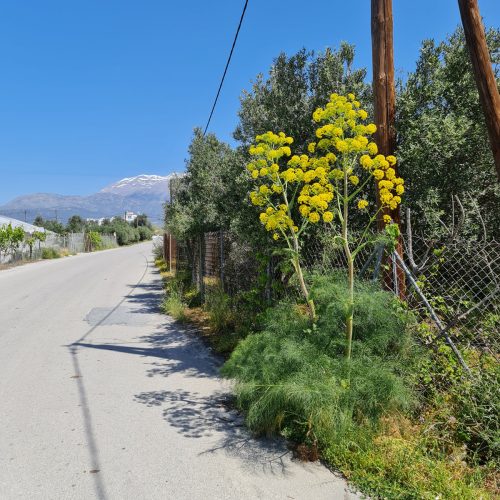
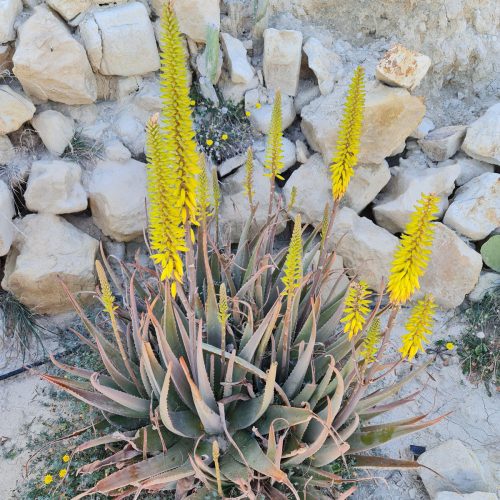
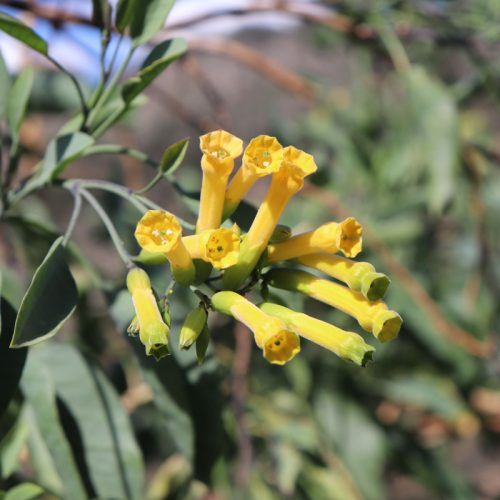
The next day we drove to a promising sounding spot called Orchid Hill, just outside Spili, and it didn’t disappoint: a tulip meadow (t.goulimyi), gave way to hillsides covered in the most stunning orchids. First orchis italica, the naked man orchid, clumps of O.pauciflora lighting up the spaces between the limestone rocks, and then, as I made way for the bees, going about their business amidst this feast, I realised that they weren’t bees but in fact bee orchids. I know I’m a bit biased but they were pretty astonishing.
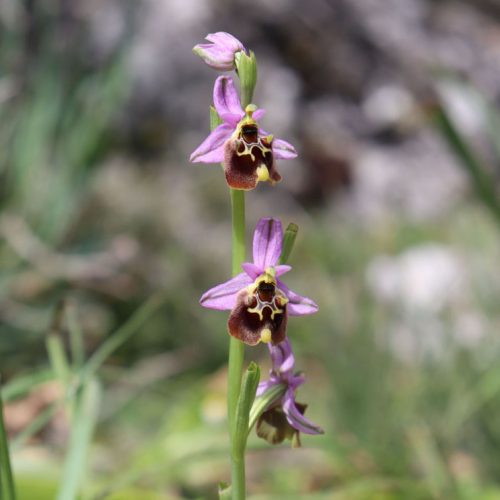
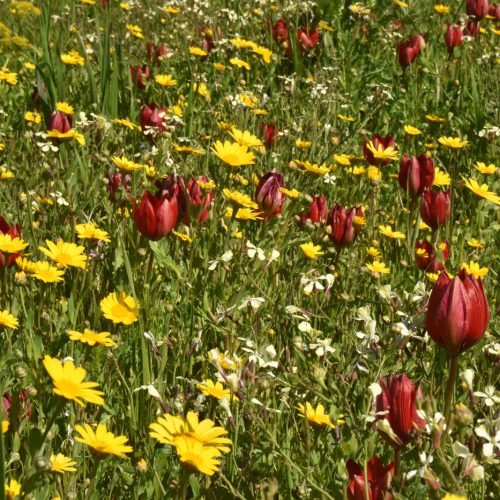
To Imbros gorge next, via a stunning old olive grove, having camped on another beach overnight. We felt very intrepid scrambling about on rock faces to look at dracunculus vulgaris (aka the dragon, or vampire lily) and ranunculus asiaticus, and then found both in abundance lower down as the conditions very slightly improved for them to thrive. Dracunculus are pretty common on Crete, but for the first timer they were one hell of a sight. And smell. Essence of rotting meat, accompanied by lots of very excited flies, unwittingly carrying out the pollination role. That level of evolution – BY A PLANT – blows my mind.
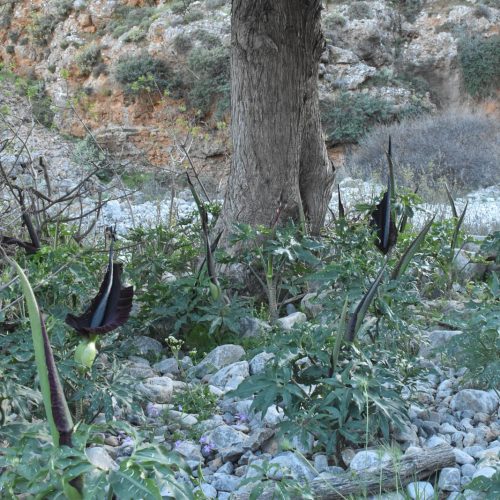
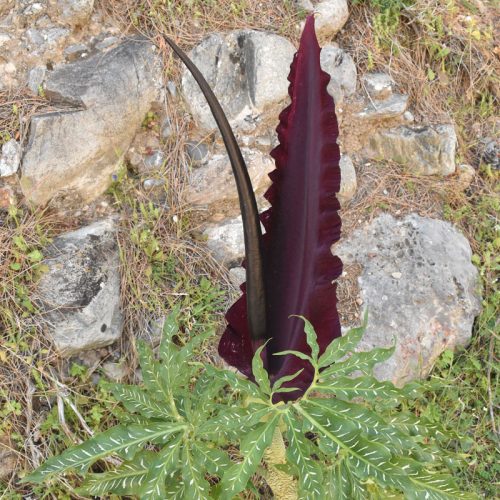
An army of tulips (t. saxatilis and t. bakeri) and anenome coronaria greeted us on a cold and grey Omalos plain, cheerfully getting on with life under blossoming fruit trees.
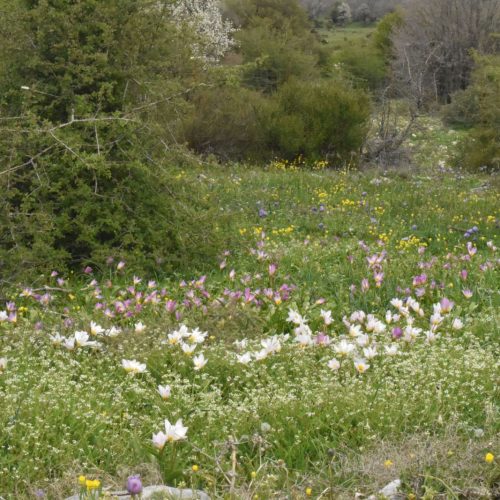
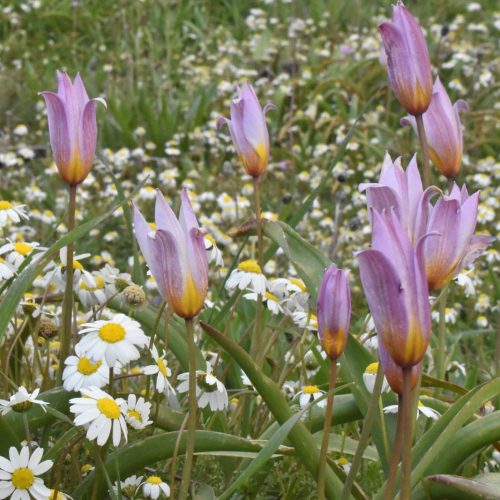
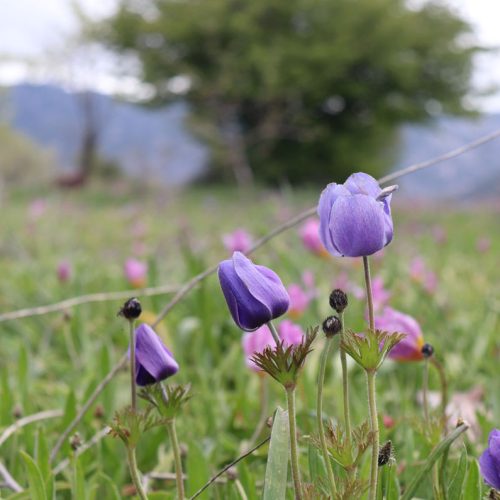
Earlier in the day, the exposed, windy and dry Gramvousa peninsula had yielded an interesting mini gorge of euphorbia dendroides and ballota, and on our drive from there to Omalos we stopped by the side of the road for an hour to explore a small damp copse of chestnut trees with colonies of cyclamen creticum, primulas and arisarum vulgare poking through last seasons decaying husks. Amazing diversity of habitats in just one day, and in just one corner of the island.
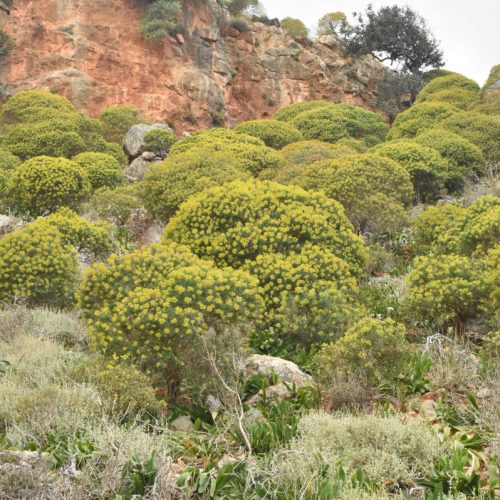
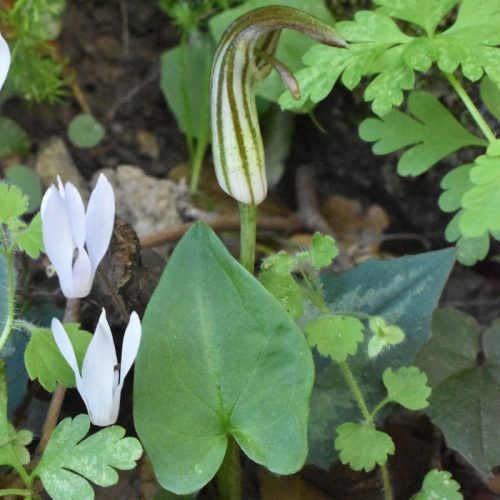
We camped by the side of a stream, in a forest of plane trees, and the next morning set off down Irini gorge to the sea. The sides of the gorge were smothered in phlomisand salvia, and absolutely buzzing with insect life. The stream soon dried up but we could see the high water mark left after the winter rains by looking at the exposed tree roots.
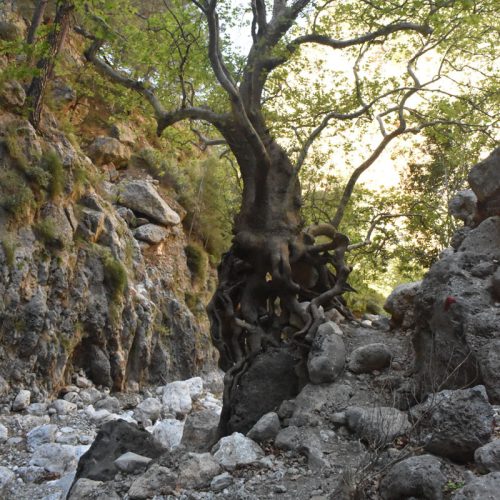
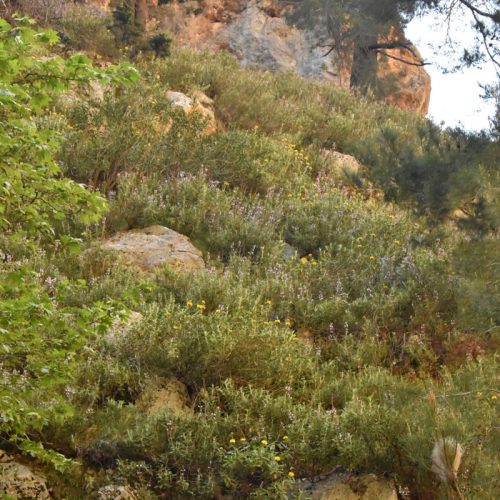
Near the bottom of the gorge, we were drawn out of the stony river bed and into an olive grove, by a flash of blue from a tassel hyacinth. And there, waiting for us among the olives were more orchids: tongue orchids, orchis simia and anacamptis coriophora.
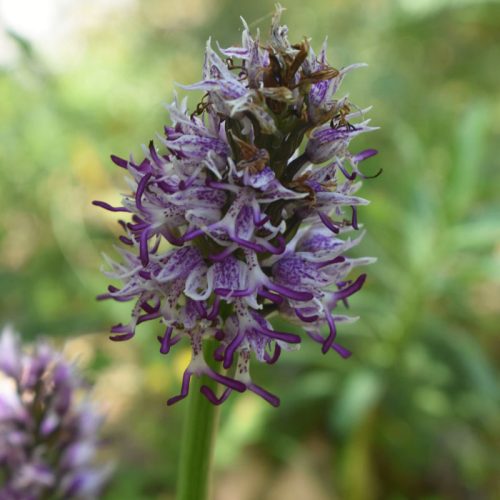
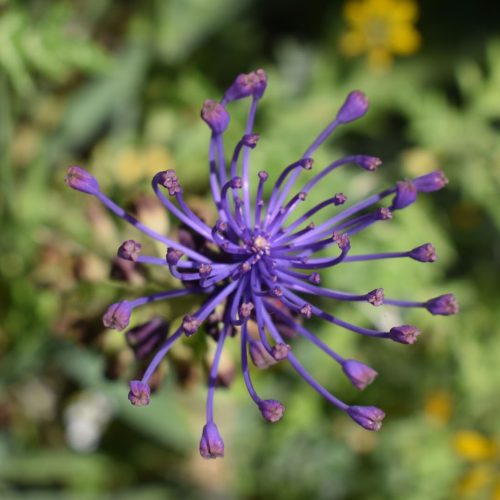
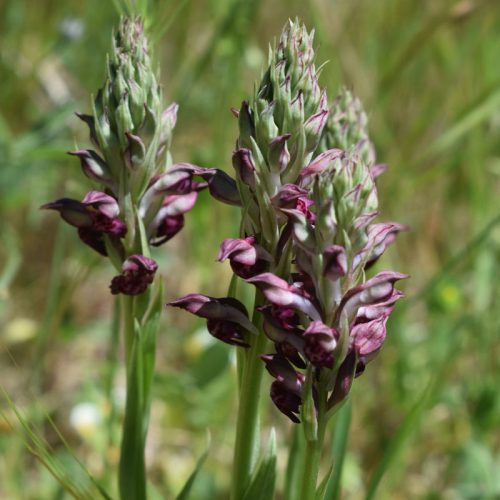
Later that afternoon we headed south for Rouvas gorge, observing en route how the plane trees clearly favour the damper valleys, leaving the more drought tolerant maquis to cover the drier ridges.
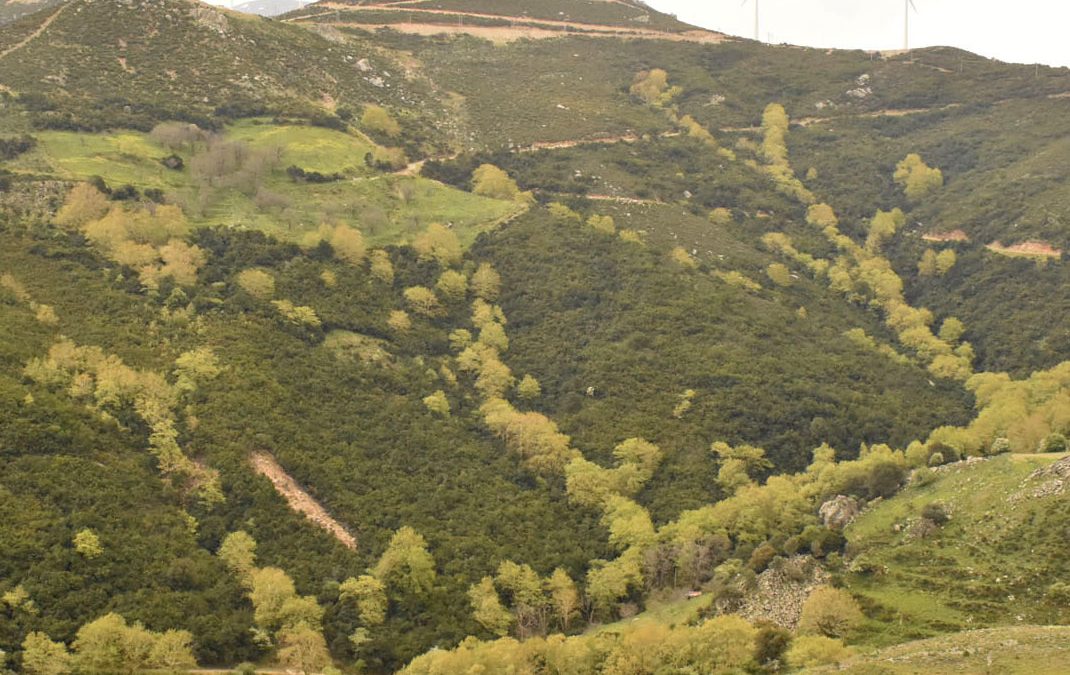
At one point, we drove for a good 30 minutes, in the weak evening sun, through the most wonderful fields of gold: chrysanthemum segetum and c. coronarium carpeting the ground beneath the olive trees. As usual we had left it late to find a spot to camp for the night so we settled for a grassy (and orchid filled) verge by the side of the road in the fading light.
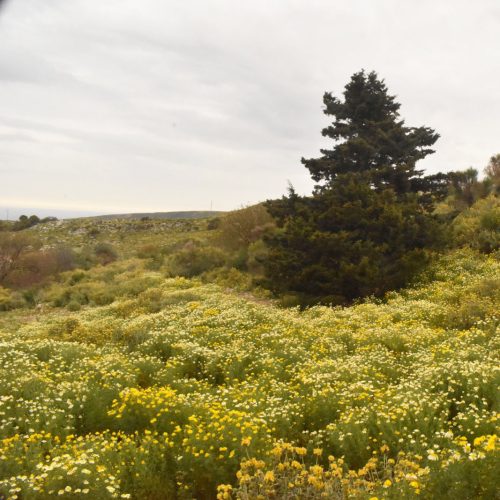
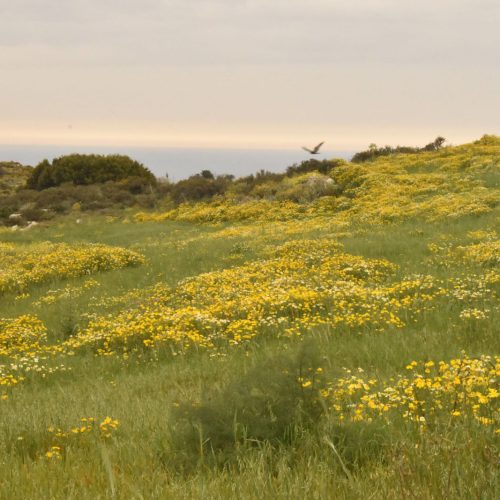
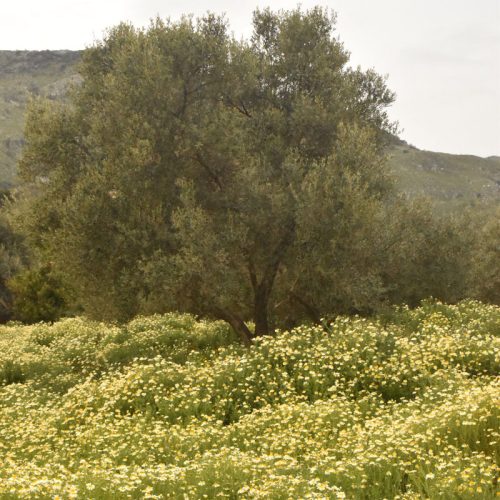
On our last morning we set off for Rouvas gorge and had barely gone a mile down the road when had to pull over and investigate an entire hillside where conditions were just right for gladiolus italicus, and more orchids (anacamptis papilionacea). It’s true what they say about not being able to swing a cat without hitting an orchid on Crete, but the gladioli were especially spectacular here.
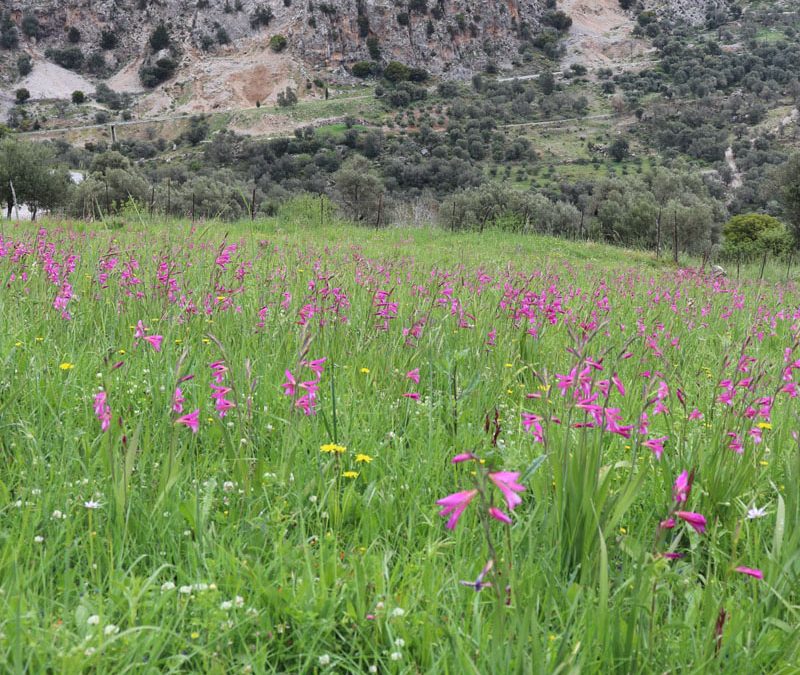
Rouvas gorge was a little on the stony, barren side but we trudged up it hopefully, admiring (and smelling) the maquis scrubland and the intricate euphorbia acanthothamnos. Near the top we came across a little colony of arums and an ancient lone pear tree springing into life.
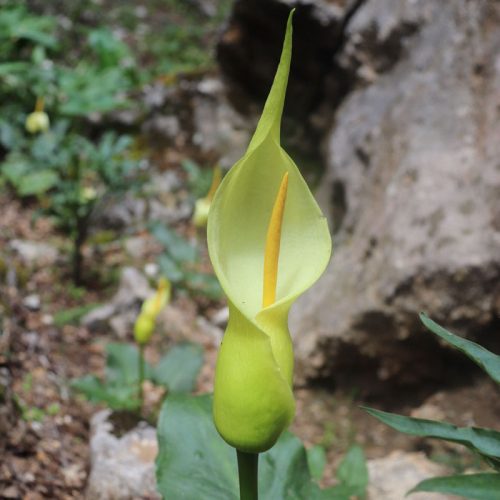
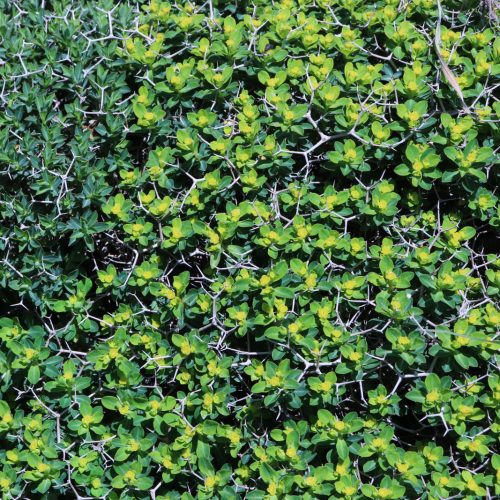
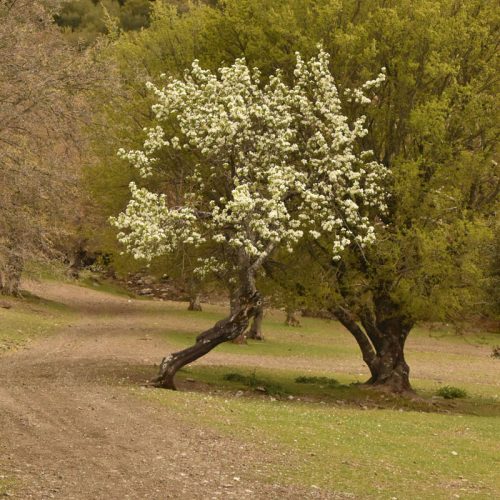
I can’t recommend Crete in spring highly enough. No crowds, Warm (enough) and sunny, incredible scenery, delicious food, and most of all, wonderful plants.
